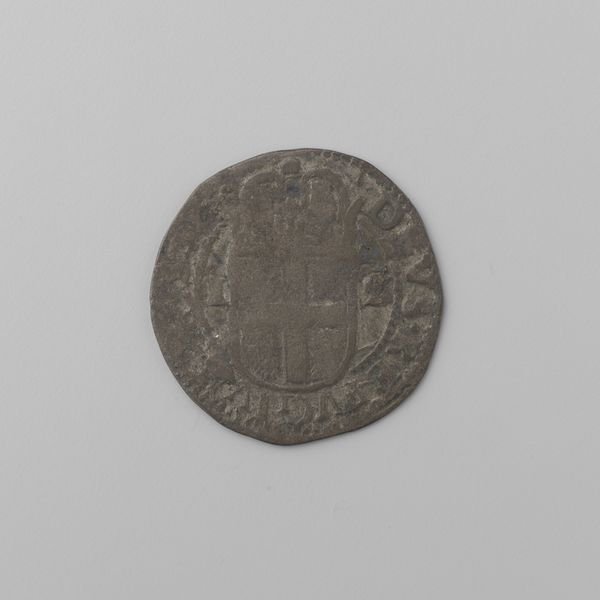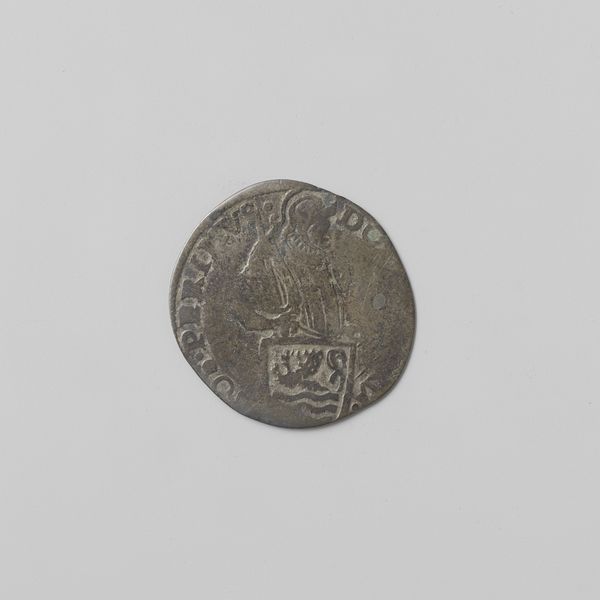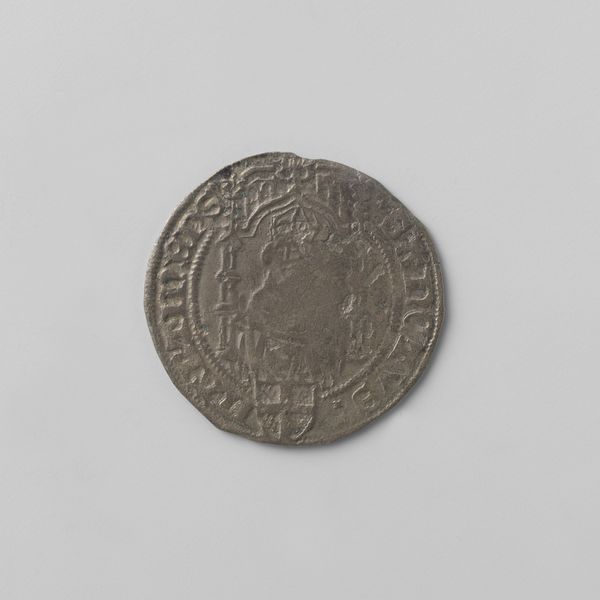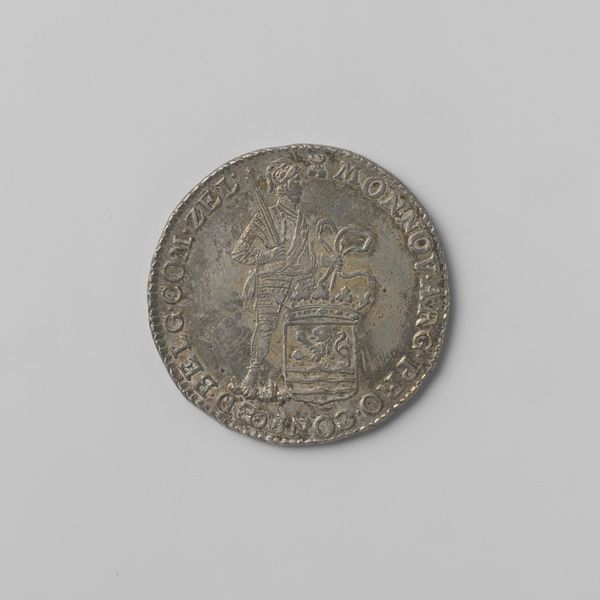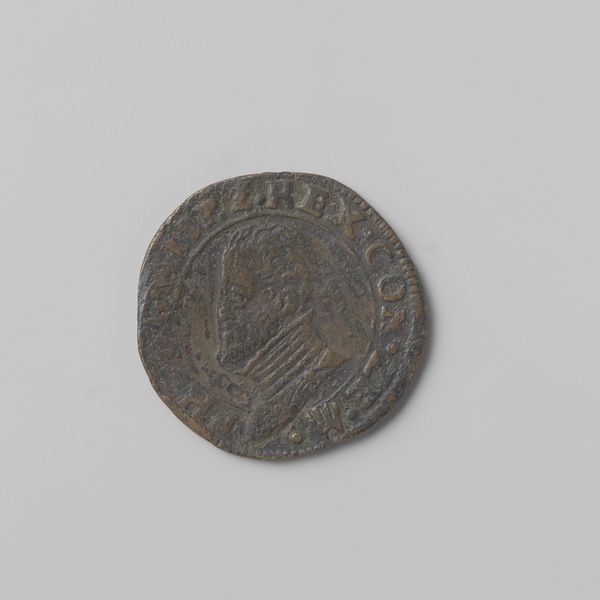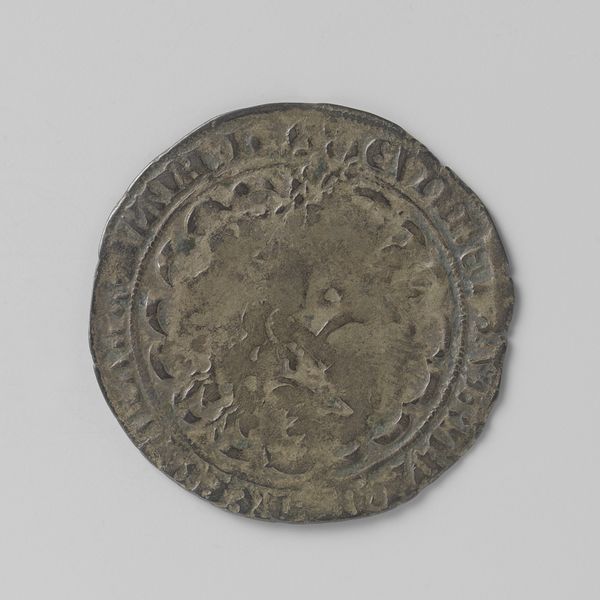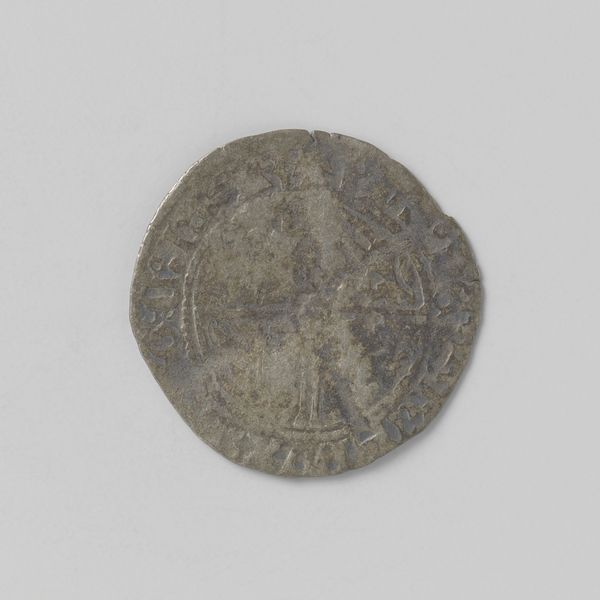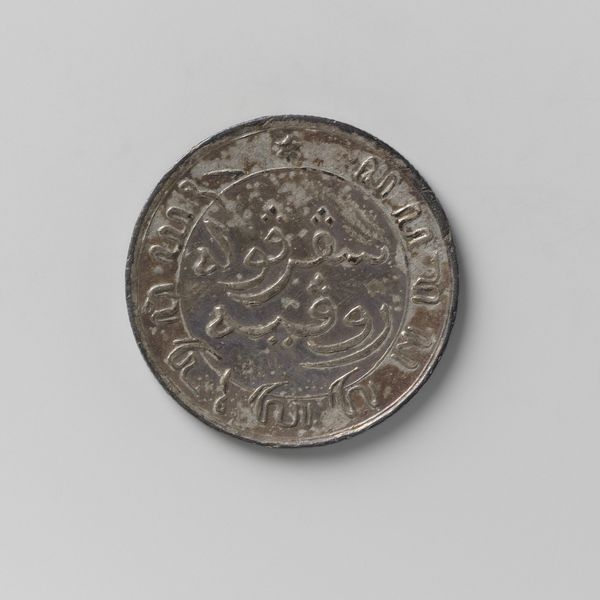
carving, silver, metal
#
portrait
#
carving
#
silver
#
metal
#
11_renaissance
#
ancient-mediterranean
#
coin
Dimensions: diameter 2.6 cm, weight 3.15 gr
Copyright: Rijks Museum: Open Domain
Editor: Here we have a "Hollandse Tiende Philipsdaalder van Philips II, 1572," currently housed at the Rijksmuseum. Made of silver, it's a striking portrait, carved with considerable detail. Curator: My first thought is its monochrome scheme is rather muted and almost melancholy. It has an ethereal ghostly presence due to the monochromatic use of silver and lack of contrast. Editor: The crafting of coins was so important then. Think of the material processes; the extraction of silver, the smelting, and then the skilled labor of the die cutter who creates the image in reverse. The minting process itself, hammering or pressing, all crucial steps in establishing economic and political authority. Curator: Absolutely. The linear precision defines the aesthetic. Note the careful delineation of Philip II's profile, framed meticulously by the circular edge. Observe the structured lettering, how it encloses the composition and commands a formal viewing. Editor: This wasn't just about aesthetics, but the cost and extraction of these materials and then, quite literally, putting power into the hands of people via the economy. The materiality underscores its use and reception by a wide demographic across socioeconomic lines. Imagine the circulation of this single coin, who handled it, and what was purchased. Curator: Certainly, one can’t overlook how the intrinsic aesthetic qualities served explicit socio-political functions. That precise, almost rigid form visually reinforces notions of power and order of the King Philip’s regency during the Renaissance. The weight, form, and royal insignia declare a powerful message of control and prosperity through codified and widely circulated visual elements. Editor: Considering both the materials used and how widespread its use was allows us to trace cultural exchange, technological innovation, and social hierarchies during a transformative era in Dutch and European history. The economy relies on art, so, in turn, art impacts the economy. Curator: It offers a fascinating glimpse into a period when visual representation and power were so intricately entwined. It exemplifies Renaissance portraiture distilled to its essence.
Comments
No comments
Be the first to comment and join the conversation on the ultimate creative platform.



